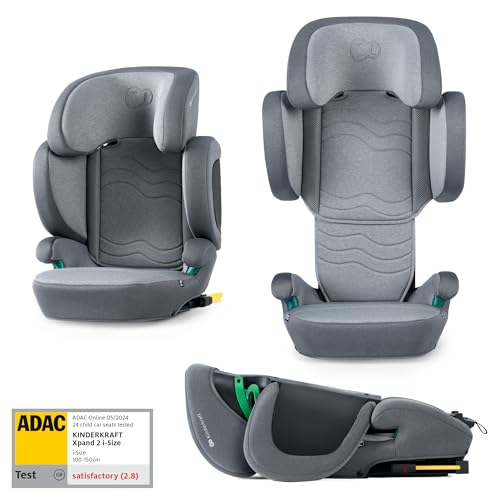This company has no active jobs
The Leading Reasons Why People Achieve In The Prams Industry
Prams and Pushchairs: A Comprehensive Guide for New Parents
Navigating the world of baby transportation can be overwhelming for new moms and dads, particularly when it comes to selecting between prams and pushchairs. Each option offers unique advantages and limitations, suggesting that making a notified choice is important. This article intends to provide an extensive understanding of prams and pushchairs, their differences, features to consider, and tips for choosing the best one.

Understanding the Basics: Prams vs. Pushchairs
Prams and pushchairs are terms frequently used interchangeably, however they describe various types of baby transportation systems.
Definitions:
- Prams: Traditionally designed for newborns and babies, cheap prams have a big, fully flat bassinet that allows for optimal convenience and safety throughout early phases of a child's life.
- Pushchairs: Designed for older babies and young children, pushchairs usually have an upright seat that appropriates for children who can support their head and neck. They often come with adjustable recline options.
Key Differences
| Feature | Pram | Pushchair Sale (Www.Punjabbazar.Com) |
|---|---|---|
| Design | Flat bassinet | Upright seat |
| Age Suitability | Newborn to around 6 months | 6 months to 4 years |
| Mobility | Normally much heavier, less foldable | Frequently light-weight and foldable |
| Convenience | Cozy for newborns, tight fit | Adjustable, can be reclined |
| Usage | Suitable for strolls and leisure | Versatile for daily activities and travel |
Features to Consider When Choosing Prams and Pushchairs
Security Features
- Harness systems (5-point vs. 3-point)
- Braking systems (foot-operated vs. hand-operated)
- Stability and durability of the frame
Weight and Portability
- Think about the weight of the pram or pushchair
- Try to find a design that folds quickly for transportation
Size and Storage
- Inspect dimensions for fitting through entrances and in automobile trunks
- Try to find additional storage options like baskets or pockets
Convenience
- Padded seats and adjustable recline positions
- Suspension systems for smoother rides on rough surfaces
Weather condition Protection
- UV protection in sunshades
- Alternatives for rain covers and windscreens
Wheels and Maneuverability
- Wheel size and type (fixed vs. swivel)
- Suspension systems that assist handling and comfort
Durability
- Designs that convert from pram to pushchair
- Stronger frames that can accommodate growing children
Popular Types of Prams and Pushchairs
When considering prams and pushchairs, moms and dads frequently discover numerous styles accommodating particular needs. Here are some well-known types:
1. Standard Prams/Pushchairs
These are excellent all-rounders, developed for daily use with a strong frame and adequate storage area. They are frequently adjustable and can deal with various terrains.
2. Travel Systems
These include a vehicle seat and a stroller that can be utilized together, making it easy to transfer the baby from the vehicle to the pram without waking them up.
3. Umbrella Strollers
These are lightweight pushchair and foldable, perfect for quick getaways and travel. While practical, they often lack a few of the security and comfort functions found in much heavier designs.
4. All-Terrain Strollers
Developed for off-road adventures, these strollers have bigger wheels and a more rugged frame, making them perfect for active households.
Selecting the Right Pram or Pushchair
When selecting the ideal pram or pushchair, parents need to take the following actions:
Assess Lifestyle Needs: Consider how you will utilize the pram or pushchair (day-to-day walks, travel, irregular terrain) and select appropriately.
Test Drive: It's helpful to physically evaluate the models at the store, looking for handling, convenience, and weight.
Research study Brands: Look at reviews and recommendations from other parents about particular brand names or models.
Think About Future Needs: Think ahead to ensure the option will work as the child grows. Convertible models use flexibility.
Budget plan: Set a budget plan but also consider quality and longevity. Sometimes investing more at first can conserve expenses in the long run.
Regularly Asked Questions
What is the best age to begin using a pushchair?
The majority of pushchairs can be utilized for babies from about 6 months old when they can properly support their heads and necks. Make certain to examine the manufacturer's specifications.
Are prams suitable for newborns?
Yes, prams are ideally matched for newborns due to their flat bassinet design, supplying a comfortable and secure environment.
How do I clean a pram or pushchair?
Always describe the maker's standards, however the majority of covers are detachable and can be cleaned. Wipe down the frame with a wet fabric and avoid utilizing extreme chemicals.
Can I utilize a pram or pushchair on public transportation?
Various models vary in size; light-weight and foldable choices are normally preferable for buses or trains. Nevertheless, always look for transportation policies in your area.
How long can I use a pram or pushchair?
It usually depends on the weight limit defined by the producer, frequently between 15-50 lbs, or till your child no longer wishes to be pushed.
Selecting between a pram shops and a pushchair is a considerable decision that caters to the lifestyle and needs of both the moms and dad and the kid. By understanding the differences between the two, examining critical features, and selecting the ideal model, parents can guarantee they have a safe, comfortable, and useful transport option for their little ones.
Equipping oneself with understanding supplies moms and dads not only comfort however also the confidence to make the best choice for their kid's early experience into the world. Different way of lives demand different services, so putting in the time to research study and test what fits can ease some of the tensions that include new parenthood. Pleased strolling!
- Endereço INDIA
